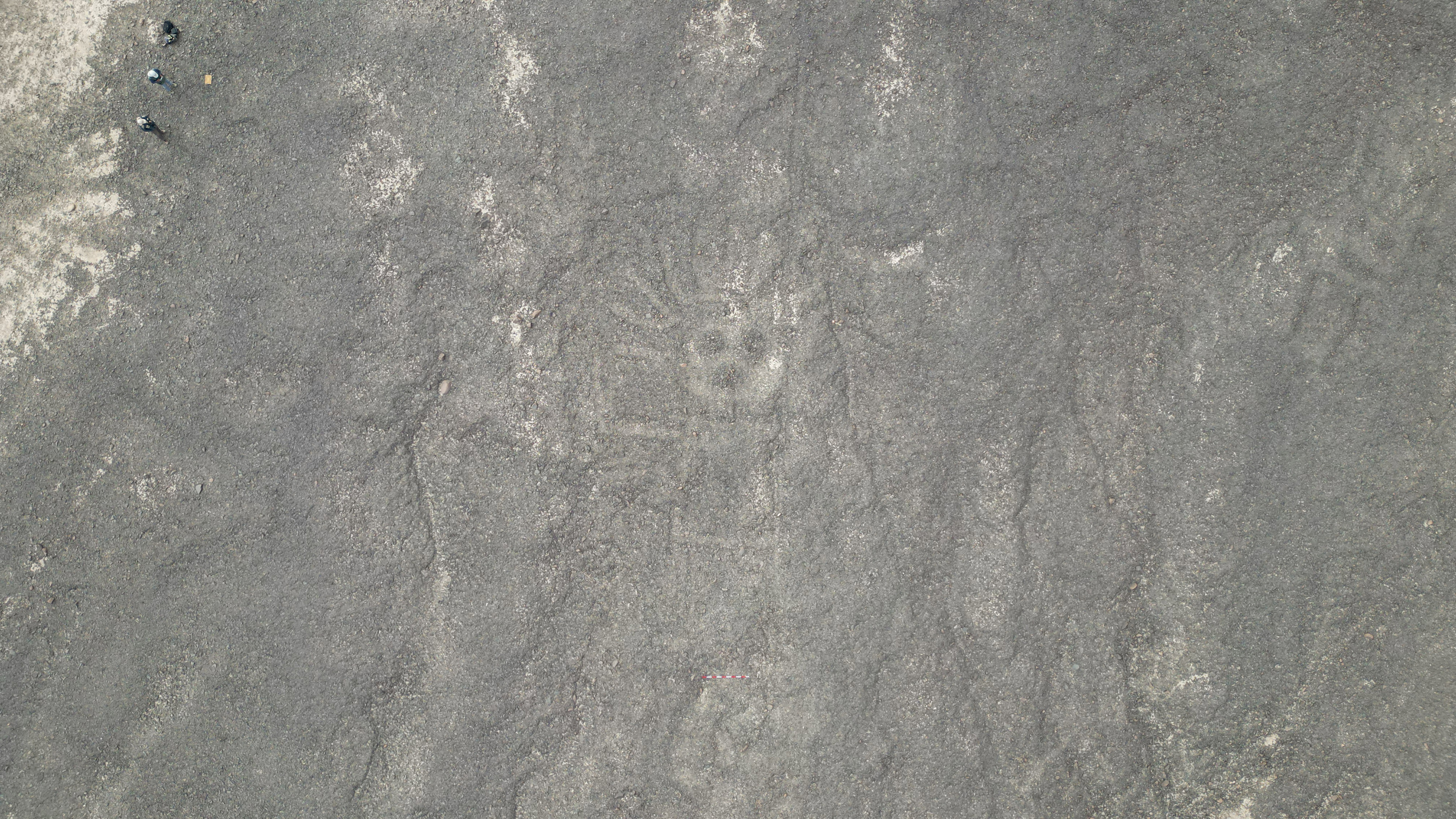Getting shanked by an orca is the last thing you’d expect in the Peruvian desert, yet for some unknown reason, the ancient Nazca who once inhabited the area decided to decorate the landscape with an enormous geoglyph depicting a knife-wielding killer whale. Spotted using an artificial intelligence (AI) system, the armed marine mammal is one of 303 newly identified designs on the Nazca Pampa, some of which portray decapitated heads and human sacrifice scenes.
Since their discovery in the 1940s, the iconic Nazca Lines have become one of South America’s most iconic tourist attractions while also occupying the minds of countless archaeologists, historians, and anthropologists, who are yet to reach a consensus regarding the function of these colossal ancient artworks. Prior to the current study, a total of 430 geoglyphs representing humans, animals, and other shapes had been identified across the Pampa.
Of these, 50 are categorized as larger, “line-type” glyphs, created by removing rocks to reveal the lighter colored earth beneath, while the remaining 380 fall into the category of smaller “relief-type” images, which were made by placing stones on the ground. The latter are generally harder to spot due to their smaller size and the fact that some of the stones have become lost or weathered over the centuries.
It’s thought that the earliest glyphs were created around 100 BCE, and many are now considerably more obscured than they would once have been. The Nazca Pampa is also an enormous region, so identifying all of the glyphs using traditional archaeological surveys is turning out to be a painstaking and lengthy process.
To speed things up, the authors of a new study developed an AI program capable of identifying faded geoglyphs hiding in aerial photographs of the Pampa. The algorithm was particularly adept at spotting the faint traces of relief-type glyphs, and enabled the researchers to almost double the number of known designs by locating more than 300 previously unidentified artworks.
“The main motifs of the relief-type geoglyphs were humans, livestock, and human sacrifice, all of which depict scenes with humans or things modified by humans,” write the study authors. Overall, 81.6 percent of these smaller glyphs portrayed figures of this nature, with severed heads featuring prominently and a menacing orca thrown in for good measure.
In contrast, 64 percent of line-type glyphs were found to depict wild animals. On average, these larger illustrations measured 90 meters (295 feet) in length, while relief-type glyphs were 10 times shorter.
Another of the newly discovered glyphs, depicting a human.
Image credit: Masato Sakai
Seeking to interpret these enormous ancient drawings, the study authors found that line-type motifs are located within 34 meters (112 feet) on average of a pilgrimage route leading to the pre-Hispanic Cahuachi Temple. They therefore suspect that these enormous figures were built and used by Nazca communities as ceremonial sites where rituals could be conducted along this sacred journey.
“Since the main motifs of the line-type geoglyphs are wild animals, it is probable that ceremonial activities related to these animals were performed during pilgrimages,” write the researchers.
In contrast, relief-type glyphs are typically located within viewing distance of informal footpaths that don’t lead anywhere in particular and don’t appear to be part of the communal road network. The study authors therefore suggest that these smaller artworks were created with the intention of “sharing information about human activities with individuals or small groups.”
“Repeatedly observing relief-type geoglyphs from the trails probably facilitated sharing information about human activities related to these scenes,” they write.
Exactly how the orca and its dagger fit into all this remains a mystery, though.
The study is published in the Proceedings of the National Academy of Sciences.
Source Link: Killer Whale Holding Knife Among 303 New Nazca Glyphs Spotted By AI
